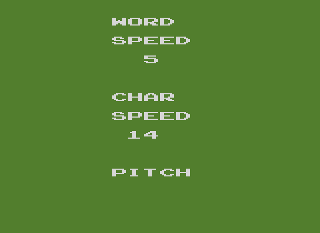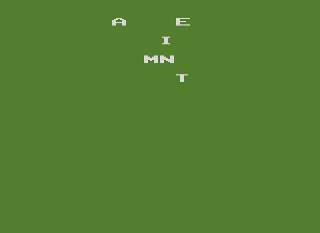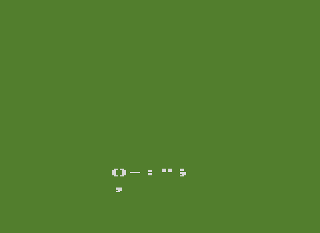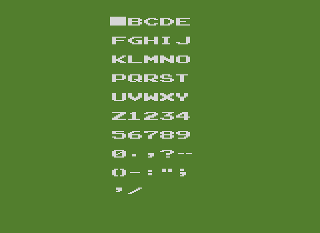|
|
Morse Code Tutor
|
Name:
|
Morse Code Tutor |
 |
| Company: | Atari | |
|
Model #:
|
N/A | |
|
Programmer:
|
Brad Stewart |
|
| Year: | 1980 | |
|
Released?
|
No
|
|
|
Notes:
|
-- --- .-. ... . /
-.-. --- -.. . / - ..- - --- .-. |
Itís well known that Atari wasnít afraid to take risks when it came to developing new games. Some ideas were just too far out there to be marketable (such as Mindlink and Mind Maze), while others were just to niche to sell well enough (such as Mark of the Mole). Morse Code Tutor falls squarely into the latter category. Although Iím sure that there were indeed Morse Code enthusiasts who owned Atari 2600ís, they probably didnít make up a large enough group to bother with.

Completely unknown until a few years ago, Morse Code
Tutor was found in a box of miscellaneous items from a former
programmer. According to Rob Zdybel, Morse Code Tutor
(or possibly just Morse Code) was developed by Brad Stewart in
his spare time to help him study for is HAM Radio license test
(knowledge of Morse code is a requirement for a
license). Brad then passed copies of the program around
to his friends which eventually found their way to Atari's
marketing department. Itís hard to believe that there
would have been much if any market for something like this,
but a similar program was released for the Videopac
(Odyssey^2) system in Europe so there is some precedence.

From the main screen you can select the Word Speed (5-72), Character Speed (5-72), and Pitch. Word Speed affects how fast the words you need to send appear, while Character Speed affects how fast the individual characters in the words appear. Pitch allows you to change the tone of the Ďbeepí that occurs each time you tap out a character. Pressing the button on the screen will produce a tone so you can test out your pitch level.

After youíve selected your options the only way to move on with
the game is to move the left difficulty switch to the B
position. This will produce a screen with some letters on
it for you to try and signal. Moving the switch back to A
will bring you back to the options screen. Pressing the
reset button when on the Letters Screen will produce different
combinations of letters, numbers, and eventually
punctuation. The order is: 5 screens of letters (always in
the same order), the entire alphabet, 3 screens of numbers (1-5,
6-0, then all the numbers), the entire alphabet with all the
numbers, 3 screens of punctuation characters, then a screen with
all the letters, numbers, and punctuation. This final
screen is a bit different as it has a flashing cursor that you
can move and make letters disappear and reappear by pressing the
button, but the use of this is unknown. After this screen
pressing reset once more will bring up the word SEND, after that
it will repeat back to the screens of letters.

The prototype is very bare bones, which makes sense given its origin. It's unlikely Atari was planning on selling Morse Code Tutor, but in the early days of the 2600's life span non-game cartridges such as Basic Programming did exist so it's not out of the realm of possibility. If the program was meant to be sold then it would need some fine tuning. Morse Code Tutor is definitely one of the more unique programs in the 2600's library.
| Version | Cart Text | Description |
| 4/23/80 | Morse Code 4/23/80 |
Last known version |
